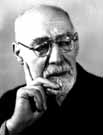
|
|
|

|

|

|

|
|
Click on an image to see a larger, more detailed picture.
|
|
|
|
|
| 1943: Death and Resistance |

|
pg. 408 |

|
|
|
|
| |
 Duped into believing that they were headed for "resettlement" in the East, Jews bound for Auschwitz carried suitcases containing their most precious belongings. While the prisoners were often sent to their deaths upon arrival, their possessions were guarded, sorted, and stored before being shipped to Germany.
Duped into believing that they were headed for "resettlement" in the East, Jews bound for Auschwitz carried suitcases containing their most precious belongings. While the prisoners were often sent to their deaths upon arrival, their possessions were guarded, sorted, and stored before being shipped to Germany.
Photo: Panstwowe Muzeum Oswiecim
|
 These Jews are being moved to the Grodno Ghetto in Belorussia. The ghetto was established shortly after the German invasion of Russia. In November 1941 25,000 Jews from Grodno and the surrounding area were forced into the ghetto. It was liquidated in January 1943, when the resident Jews were deported to their deaths at Treblinka. Even before the German occupation of this section of the Soviet Union, civilian antisemites had attacked Jews there.
These Jews are being moved to the Grodno Ghetto in Belorussia. The ghetto was established shortly after the German invasion of Russia. In November 1941 25,000 Jews from Grodno and the surrounding area were forced into the ghetto. It was liquidated in January 1943, when the resident Jews were deported to their deaths at Treblinka. Even before the German occupation of this section of the Soviet Union, civilian antisemites had attacked Jews there.
Photo: Zydowski Instytut Historyczny Instytut Naukowo-Badawczy / United States Holocaust Memorial Museum Photo Archive
|
 Rabbi Leo Baeck
Rabbi Leo Baeck
Rabbi Leo Baeck was one of the preeminent rabbis and theologians of German Jewry. Ordained in 1897, Baeck served as a liberal rabbi in Berlin from 1912 until his deportation to the Theresienstadt, Czechoslovakia, camp/ghetto in early 1943. When the Nazis created the Reich Representation of German Jews in 1933, Baeck was named its president. As chief representative of German Jewry, he refused to leave Germany, even when his safety and that of German Jewry was threatened. After being deported to Theresienstadt, Baeck worked tirelessly to bolster the morale of many Jews, even those whom he knew were destined for Auschwitz. After the war Baeck settled in London, where he became the president of the Council of Jews from Germany. The Leo Baeck Institute, which is the primary research institution for the study of German Jewry, bears the name of this venerable man.
Photo: Bildarchiv Preussischer Kulturbesitz
|
|

|

|

|

|
 1943: Heinrich Himmler is named Reich minister of the interior.
1943: Heinrich Himmler is named Reich minister of the interior.
|
 1943: Pope Pius XII announces that the Vatican can help oppressed peoples only via "our prayers."
1943: Pope Pius XII announces that the Vatican can help oppressed peoples only via "our prayers."
|
 1943: A collaborationist party, Nye Denmark (New Denmark), is established.
1943: A collaborationist party, Nye Denmark (New Denmark), is established.
|
 1943: SS Galizien (SS Galicia), a collaborationist Ukrainian volunteer SS unit, is established.
1943: SS Galizien (SS Galicia), a collaborationist Ukrainian volunteer SS unit, is established.
|
 1943: Jozef Tiso, prime minister of Slovakia and an ally to Adolf Hitler, briefly halts deportations of Slovakian Jews.
1943: Jozef Tiso, prime minister of Slovakia and an ally to Adolf Hitler, briefly halts deportations of Slovakian Jews.
|
 1943: In France, French Jew Sabina Zlatin founds a children's home in Izieu, which shields some 100 Jewish children from the Nazis; See April 6, 1944.
1943: In France, French Jew Sabina Zlatin founds a children's home in Izieu, which shields some 100 Jewish children from the Nazis; See April 6, 1944.
|
 1943: The first issue of the antisemitic Archiv für Judenfragen (Archive for Jewish Questions) is published in Germany.
1943: The first issue of the antisemitic Archiv für Judenfragen (Archive for Jewish Questions) is published in Germany.
|
|
|
|
|
| 1943: Death and Resistance |

|
pg. 408 |

|
|
The Holocaust Chronicle
© 2009 Publications International, Ltd.
|
|
